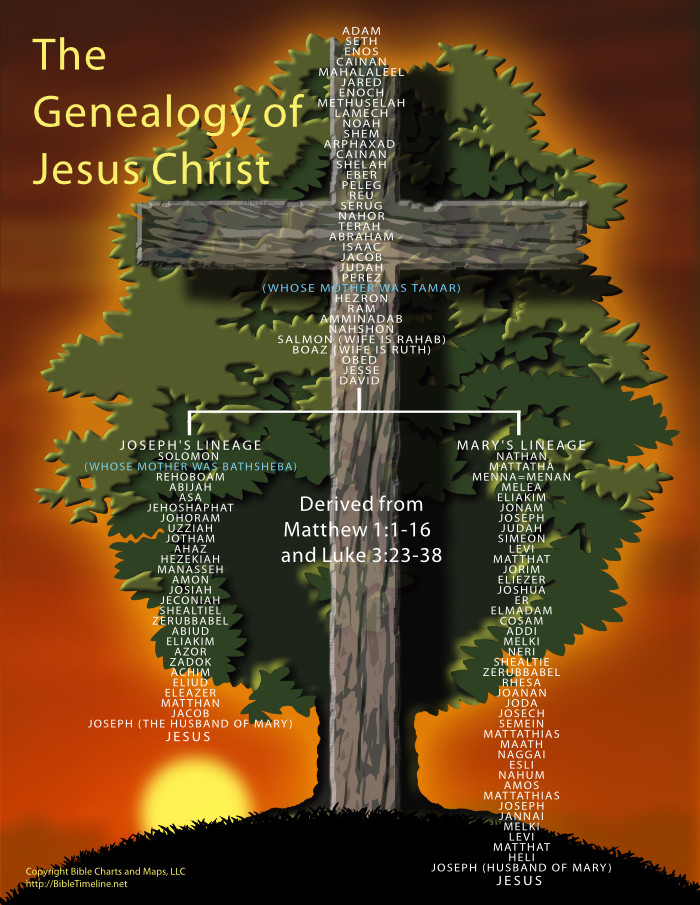My personal Bible reading today stated the following. “Biblical history shows how humanity has chosen its own ways apart from God and suffered as a result. But God wants to be close to humanity, and He knows how painful it is to be separated from Him, so He sent Jesus to make peace. Through Jesus, all things can be restored to harmony with God again.”
I was then asked to reflect on Colossians 1:19-23, to think about what did God want to do and how did He accomplish it through Jesus? And then to consider all that Jesus suffered and overcame in order to make a way for humanity to be in God’s holy presence once again. Letting your reflections prompt a prayer to express your feelings of awe and gratitude.
So my personal Bible reading falls nicely into this blog this morning as I want us to look at the Genealogy that tells me Jesus had History.
Let us read how Luke shares the Jesus history in the Christmas story.
In those days Caesar Augustus issued a decree that a census should be taken of the entire Roman world, and everyone went to his own town to register.
Luke 2:1,3
That meant that each man must return to his ancestral hometown, the town from which his family had originally come. But the only way you could be sure about your ancestral hometown was to know your genealogy which is why Mary and Joseph had to travel from Nazareth to Bethlehem because Bethlehem was Joseph’s ancestral hometown, a fact they knew from studying their genealogy.
Matthew opens with a family tree of Jesus’ ancestors (Matt. 1–16) to show us Jesus history and roots and prove beyond doubt that Jesus was a real, flesh-and-blood human. This was a crucial concept for Matthew’s first-century readers. It was also to prove that Jesus was the long-awaited Messiah of Israel.
Notice the prominence of David and Abraham. This is no doubt the central purpose of Matthew 1:1-16. To a sceptical Jewish reader, no question would be more central in his mind. God had said 1000 years earlier that the Messiah must come from the line of David (2 Samuel 7). In the time of Christ, Jesus wasn’t the only one claiming to be the Messiah. Other men—imposters—claimed to be Israel’s Messiah. How would the people know who to believe? One answer: Check his genealogy. If he’s not from the line of David, forget it. He can’t be the Messiah.
That’s why Matthew 1 begins this way: “A record of the genealogy of Jesus Christ, the son of David, the son of Abraham.” David is listed first, even though chronologically Abraham came first in history. Why? Because the crucial issue was not, “Is Jesus a Jew (a son of Abraham)?” but rather, “Is he a direct descendant of David?” In order for Jesus to qualify as the Messiah, he must be a literal, physical descendant of David.
Finally, Matthew wants to show us that Jesus is also the international Christ, the Saviour of the whole world. His genealogy, (His roots) reach beyond Jews to include several ethnic groups that populated the Middle East during Israel’s Old Testament history and in particular Matthew mentions certain women with a dodgy past, yet they were part of Jesus roots.
That’s what Matthew 1 is teaching us. Jesus had roots. He had a history. He had a family. He came from somewhere.
Jesus’ family tree hides nothing. His heritage was a multi-ethnic society and included several unattractive or embarrassing individuals.
Indeed, the circumstances surrounding His own birth might have raised questions in the minds of some. But Jesus never denied His ancestry or allowed others to shame Him.
I want to include a picture of Jesus ancestry for you to look at taking from both Joseph and Mary’s point of view. You can download your own copy from amazingbibletimeline.com


